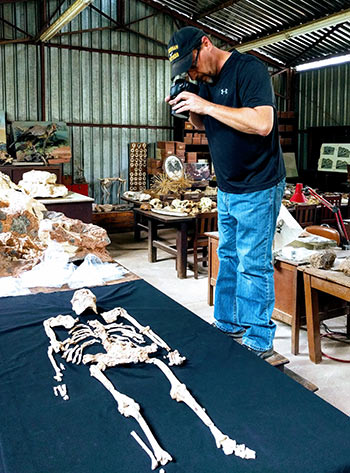BSC professor part of team that revealed most complete Australopithecus skeleton
BSC professor part of team that revealed most complete Australopithecus skeleton
For Immediate Release
Dec. 6, 2017

BIRMINGHAM, Ala.—A team that included a professor at Birmingham-Southern College unveiled on Wednesday, Dec. 6, 2017, the most complete Australopithecus fossil ever found to the world.
“Little Foot,” as the skeleton is called, is the only known virtually complete Australopithecus fossil discovered to date. It is the most complete skeleton of a human ancestor older than 1.5 million years ever found; it is also the oldest fossil hominid found in southern Africa, and may date back 3.67 million years.
BSC Associate Professor of Biology Jason L. Heaton is one of the researchers who has been working on the skeleton, which was discovered about 20 years ago at the Sterkfontein caves in South Africa. Heaton, who started on the project while conducting his Ph.D. research at Sterkfontein, published a reconstruction of Little Foot’s environment in 2004 and hypothesized that the remains belonged to a young female who fell into the caves.
Since then, he has been working as part of the team to truly understand the skeleton, including looking at its anatomy to determine how it walked and how it is related to other fossils in eastern and South Africa.
“Because of its completeness, as well as age, Little Foot may be in a unique position to shed light on the important question of what role South African hominids played in the evolution of our own species,” said Heaton, who teaches courses in vertebrate anatomy and more at BSC and has taken undergraduate students to assist in research in South Africa. “I am eager to see what this incredible resource has to tell us.”
The results of Heaton’s and the team’s studies are expected to be published in a series of scientific papers in high impact, peer reviewed international journals in the near future.
Photo credit, Travis Pickering

